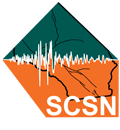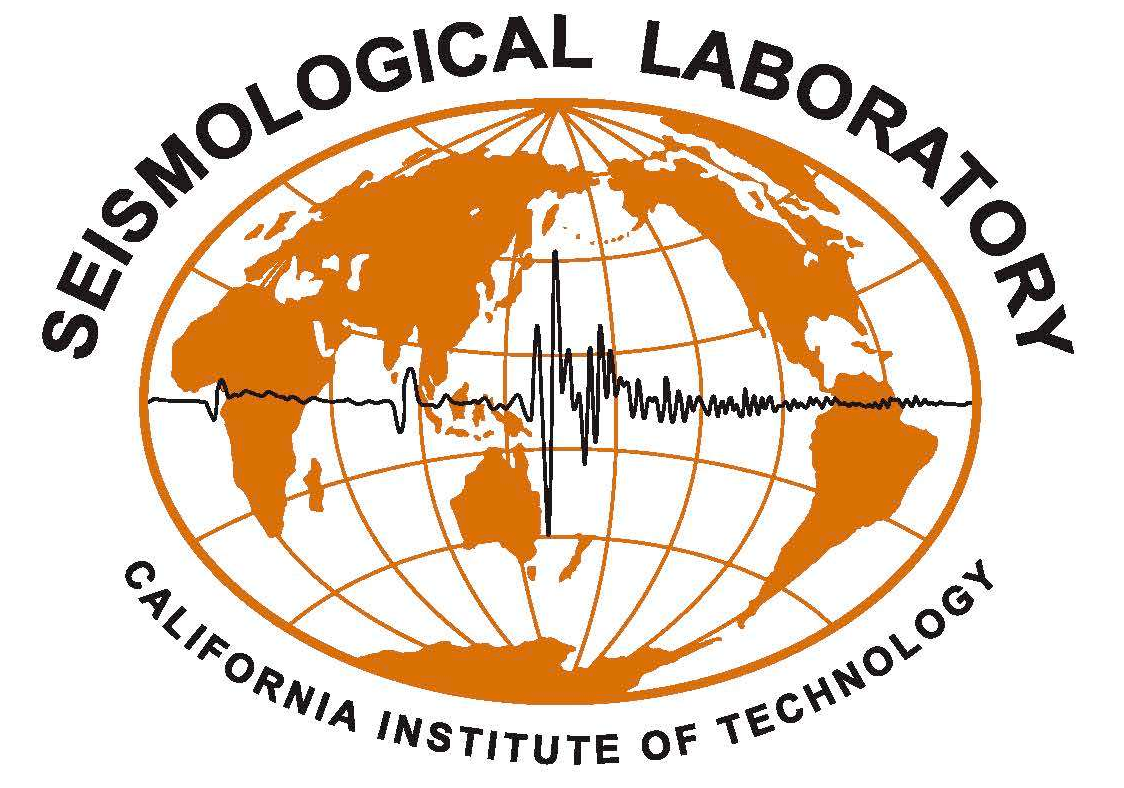Below is a real-time feed of data from a selection of SCSN seismic stations located in Southern California. The stations labeled within this window correspond to the locations indicated on the map further below. Click here to access our new SCSN Live Seismic Network Stream of all three of our live feeds! This new feed includes our Live Seismograms Feed, Live Media Feed, and Live DAS Feed.
NOTE: Earthquake data on this site may be preliminary and subject to change.
To view 12-hour webicorder displays, and from more stations Click Here
Feed Examples

Earthquake Processing FAQ
- How does a seismograph work? The ideal seismograph would be anchored in a reference frame that travels with the Earth’s rotation, but does not participate in any of its vibration (maybe that elusive “sky hook”?). We could devise a way to record the relative motion between the Earth and the shy hook, giving us an exact record of the ground displacement. Lacking such a stable reference frame, we use instead a pendulum (or, for vertical motion) a heavy mass on springs. The pendulum does not actually stand still as the Earth moves, but it does lag behind the motion, so a recording, called a seismogram, can be produced. There have been many ingenious designs since the late 1800’s, many of the older ones using a mechanical recording stylus or a light beam to record on photographic paper. NEIC has a very interesting section on historical seismographs. The modern “broadband” seismometers use an electronic feedback loop to keep the pendulum mass stationary, while outputting the voltage necessary to do this.
- The terms “seismograph” and “seismometer” are often used interchangeably, with some tendency to use the latter term for a well-calibrated instrument, or sometimes the pendulum apparatus without the recording system.
- Most “high magnification” (very sensitive) seismographs output the velocity that the ground is moving, rather than the displacement. Most “low magnification” or “strong motion” instruments output ground acceleration; hence they are also called accelerometers.
- What information is contained in a seismogram? The seismogram (or recording of an earthquake or several earthquakes) duplicates the ground motion at the station in magnified form. Generally, several different pulses of energy, representing different waves traveling through the Earth at different speeds and by different paths, appear for each quake. When an earthquake starts, the sudden shifting of rock along the fault causes two types of “body waves”, which propagate outward and downward from the hypocenter, starting at the same time. P (primary) waves and S (secondary) waves travel at different, for the most part known, speeds. (Think of throwing a rock into a pond, except instead of one type of wave, there are two.) In addition, “surface waves” may be generated, which travel along the surface of the Earth only. There are two basic types of surface waves: Rayleigh waves and Love waves. For earthquakes that are near the station (within about 120 km), we usually see only one P and one S wave, because the first waves travel a direct path through the crust to the station. At greater distances, however, waves that take multiple different paths, may be visible, such as a P wave that follows the bottom of the crust (called the Moho), followed immediately by one that takes the direct path.
- Earthquakes at great distances from the station (more than 1000 km) are called teleseisms. Teleseisms generally have very complex seismograms: P and S waves can bounce off Earth’s surface or the core-mantle boundary and they may change from P to S or vice versa. We generally use a special chart called “travel time curves” to tell us when to expect each “phase” or wave, depending on the distance of the teleseism from the station and its depth below the surface.
- We generally measure the onset time of the P and S waves, to help with location (see next question). We also measure the amplitude, or the peak deflection, of at least the largest wave on the record. For some purposes, we measure the period (or how long it takes the wave to go through one cycle).
- How does a seismic network locate earthquakes? The first step is getting the data from our remote seismographic stations to our offices at Caltech. This process is called “telemetry” and may include land line paths, radio, microwave, and the Internet. We receive the data streams, usually one measurement every 100 th of a second, very close to real time. A regional seismic network locates an earthquake based on the arrival times of the P waves and S waves at the various stations. The waves arrive at the seismographic stations in order of their distance away from the earthquake’s hypocenter (where the first waves of the earthquake originate), and the time delay between P and S indicates the distance.
- The data streams coming in from the stations are fed into two real-time computers (a primary and a backup), which look for strong increases in amplitude. This process is called “P picking”, because we are looking for P waves (S waves, too). An associator program tries to fit all the “picks” together to make a rational earthquake location. A magnitude program also looks at the peak amplitudes & tries to assign a magnitude automatically. If the earthquake location & magnitude meet certain consistency requirements, the “event” is published, on the “Recent Earthquakes” web sites, by e-mail subscription & so forth. Currently, all automatic solutions for earthquakes in the SCSN are reviewed by an seismic analyst (who may or may not be offended if you call him a P picker).
- How do we measure the magnitude of an earthquake? In the 1930’s, when Charles Richter and Beno Gutenburg first tried to produce a list of all the earthquakes detected (called an earthquake catalog) in Southern California, they were faced with distinguishing in the list which ones were the large ones and which ones were not. They borrowed the concept of stellar magnitude from astronomy and established an arbitrary logarithmic scale based on the amplitude of the seismographic recording. Amplitude in this context is how far the pen swings off the center line during the earthquake. This original “local magnitude” or ML was and is truly arbitrary: if a quake is 100 km away from a standard Wood-Anderson seismograph and the amplitude is 1 millimeter, the quake is a 3.0. If the amplitude is 10 millimeters, it’s a 4.0, if it’s 100 millimeters, it’s a 5.0 and so forth. They used empirical observations to correct for distance to stations that did not happen to be at 100 km away.



